Will Anti-Streetcar Referendum Succeed?
The process is far more complicated legally than has been reported. Which will make it harder for opponents.
The whole thing sounds simple, right? You get about 31,000 city voters to sign a petition requiring the city to have a referendum on the streetcar, and it goes before the voters for an up or down vote. But in fact, it’s a far more complicated process.
For starters, the anti-streetcar folks face a tight time crunch. Under the law, they have 60 days to get the signatures. But they want to get this before voters in the Spring election on April 7, which means, by law, the petitions must be completed by 70 days before the election. That’s around February 1, and the drive started January 5, which leaves about 26 days to get the signatures. In fact, Chris Kliesmet of the CRG Network, which is organizing the drive, hopes to have all the signatures in time for next Common Council meeting on January 21.
“If I had 60 days, it would be a slam dunk,” he says of the petition drive. But can they do it in half the time? “Right now I have no idea,” he admits. “The problem is logistics.”
Kliesmet has long experience working on recalls and petitions, going back to the effort against Milwaukee County Executive F. Thomas Ament, whose administration created the infamously lucrative pension plan. “We got 180,000 signatures in 28 days,” Kliesmet recalls. But of course, there was a media frenzy over the pension scandal, which made the process quite easy.
This, by contrast, is an issue that’s getting scanty coverage from the media, and the media itself fields far fewer reporters than it did 13 years ago. Not to mention that the petition drive is coming amid dreadful weather. “Yeah, it’s a concern,” Kliesmet says. “Snow on the ground, it’s cold.” Nay, freezing.
From there it gets even more complicated. Should the requisite signatures be gained, the petition — which requires that a majority of voters in a referendum must approve any Common Council project to spend at least $20 million on any rail transit project — will be presented to the council. The council could then choose to pass this into law, and the referendum would be held.
But the council was already asked to approve a referendum, back in July, 2011, when it first approved the streetcar plan, and it voted against this. “Even aldermen who opposed the streetcar voted against the referendum,” Ald. Bob Bauman, a fervent streetcar supporter, notes.
So it’s unlikely the council will adopt the measure supported by the petitioners, in which case it must go before the voters. In essence, this will be a referendum on having a referendum. If the voters approve the proposed ordinance to require a referendum to approve any spending of $20 million or more on rail, this would then require a second referendum to vote up or down on the streetcar.
In short, the April referendum would be the referendum on whether to have a referendum. The actual referendum to vote up or down on the streetcar wouldn’t occur until the next election, in February 2016.
And by then the issue could be moot. In fact, it could be moot by the April referendum on the referendum. Because the Common Council is certain to vote up or down on the streetcar financing plan at its February 10 meeting. As Jeramey Jannene has reported, the streetcar’s opponents on the council will have used up all their legal methods of delaying the vote by then. And a majority seems poised to vote yes on the plan.
Once the council votes yes, it’s all over, Bauman says. He says the city attorney’s office has researched this and concluded that under case law, a referendum can’t undo an action already taken by the Common Council. (The city attorney’s office did not get back to my requests for an interview.) That would make sense, all the more so if any of the construction and spending has been undertaken; otherwise a referendum could overturn any decision of the council to spend money no matter how far back in time.
Kliesmet, however, says his group would hope the courts would rule the council couldn’t take any action once it receives the petition signatures. “That’s what we’re hanging our hat on.”
Bauman remains confident this won’t hold up legally and contends the petition drive “has nothing to do with the streetcar,” anyway. He notes the second referendum to vote up or down on the streetcar will occur in the February 2016 election, which is the mayoral primary. “This really about defeating (Mayor Tom) Barrett and driving a wedge between the African American portion of the Democratic base and the rest of the city,” he says. As Urban Milwaukee recently reported, Republicans and conservatives opposed to Barrett may end up supporting African American Ald. Joe Davis for mayor, and Davis has turned into a streetcar opponent.
Kliesmet and veteran Republican PR operative Craig Peterson, who is also supporting the petition drive and the candidacy of Davis, both contest the picture Bauman paints. Kliesmet says the two-stage referendum process could be avoided if the council simply enacts the proposed ordinance to have a referendum upon receiving the requisite signatures.
Moreover, if there is such opposition to the streetcar, why weren’t any of the aldermen who voted for it defeated in 2012? “That’s because it wasn’t much of an issue back then,” Kliesmet says.
Nonsense, Bauman responds. He notes that when the original Common Council vote approving the streetcar was taken in July 2011, “we had extensive public hearings on this, the same talk radio assaults, the same media attention, and actually there was more Journal Sentinel coverage than now.” (Kliesmet expressed frustration at the lack of newspaper coverage.)
Bauman estimates that all the emails, phone calls and letters coming to City Hall are running 65 percent in favor of the streetcar.
But Kliesmet still hopes to carry the day, whatever the difficulties. “It’s a challenge. It’s fun, though.”
Short Takes
-Kliesmet is hoping that if the drive hasn’t gotten the requisite signatures by January 21, the council will give his group until the February 10 meeting, even though that would run afoul of the law requiring the signatures 70 days prior to the election when the referendum proposal is on the ballot. Sounds like an issue — and there could be others — that ends up in the courts.
-Bauman says most of the messages from the voters coming to City Hall are through the Urban Milwaukee portal, which allows people to sign in and express their opinion and is then forwarded to the Common Council. “We’ve gotten 1,800 messages through the Urban Milwaukee portal,” Bauman says. “It’s the most effective communication format I’ve seen in all my years here in City Hall.”
Just trying to do our part for the democracy.
Milwaukee Streetcar Maps and Renderings
Milwaukee Streetcar Coverage
- The Story Behind the Streetcar Referendum – Michael Horne and Bruce Murphy – January 8th, 2015
- Council Delays Streetcar Until January – Jeramey Jannene – December 16th, 2014
- Committee Takes No Action on Streetcar – Jeramey Jannene – December 10th, 2014
- Committee Approves Milwaukee Streetcar – Jeramey Jannene – December 9th, 2014
- RACM Approves Tax Funding for Streetcar – Michael Horne – December 8th, 2014
- How to Sell the Streetcar – Michael Horne – November 28th, 2014
- Next Stops for the Streetcar – Michael Horne – November 24th, 2014
- Barrett Moving Forward with Streetcar – Jeramey Jannene – November 18th, 2014
- Who Will Be Streetcar Operator – Michael Horne – May 8th, 2014
- A Streetcar Named Cooperation? – Dave Reid – April 27th, 2014
- How a Streetcar Spurs Development – Angie Schmitt – November 3rd, 2013
- Streetcar Social – Michael Horne – September 12th, 2013
- Mayor Says Streetcar is a “Trojan Horse” – Michael Horne – April 17th, 2013
- Whoops, We Changed Our Mind – Dave Reid – September 27th, 2012
- Battle of the Bobs: Donovan vs Bauman Streetcar Press Conference – Jeramey Jannene – May 18th, 2012
- Important Hoan Bridge and Milwaukee Streetcar Meetings This Week – Dave Reid – November 14th, 2011
- Milwaukee Streetcar Passes Common Council – Jeramey Jannene – July 26th, 2011
- Keep the Milwaukee Streetcar Moving Forward – Jeramey Jannene – July 8th, 2011
- Milwaukee Streetcar at Apex – Jeramey Jannene – June 16th, 2011
- Milwaukee Streetcar Takes Key Step Forward – Jeramey Jannene – May 6th, 2010
- Milwaukee Streetcar Meeting This Thursday – Jeramey Jannene – October 5th, 2009
- Milwaukee Streetcar Routes Unveiled by Mayor Barrett – Jeramey Jannene – September 21st, 2009
- Milwaukee Streetcar Round-Up – Jeramey Jannene – April 19th, 2009
- Vote for your Favorite Milwaukee Streetcar Route – Jeramey Jannene – March 25th, 2009
- Design Your Own Streetcar Route – Jeramey Jannene – March 23rd, 2009
- Streetcars Coming to Milwaukee – Dave Reid – March 14th, 2009
More about the Milwaukee Streetcar
For more project details, including the project timeline, financing, route and possible extensions, see our extensive past coverage.
- FTA Tells Milwaukee to Crack Down on Fare Evasion — Even Where Fares Don’t Exist - Graham Kilmer - Dec 12th, 2025
- Alderman, State Allies Seek Federal Help to Kill the Streetcar - Jeramey Jannene - Oct 28th, 2025
- Streetcar Service Suspended Following Truck Crash - Jeramey Jannene - Oct 21st, 2025
- One Alderman’s Quest To Defund The Streetcar - Jeramey Jannene - Oct 18th, 2025
- Another Streetcar Collision - Jeramey Jannene - Jun 27th, 2025
- Streetcar Hit By Apparent Red Light Runner - Jeramey Jannene - Jun 16th, 2025
- Streetcar Will Run On Consolidated Route During Summerfest - Jeramey Jannene - Jun 11th, 2025
- City Hall: Milwaukee Must Replace Failing Streetcar Switches - Jeramey Jannene - Feb 24th, 2025
- Streetcar Confronts Limited Funding, Operations Challenges - Evan Casey - Jan 22nd, 2025
- Council Kills Streetcar’s ‘Festivals Line’ - Jeramey Jannene - Jul 31st, 2024
Read more about Milwaukee Streetcar here
Political Contributions Tracker
Displaying political contributions between people mentioned in this story. Learn more.
- January 29, 2015 - Joe Davis, Sr. received $1,000 from Craig Peterson
Murphy's Law
-
Top Health Care Exec Paid $25.7 Million
 Dec 16th, 2025 by Bruce Murphy
Dec 16th, 2025 by Bruce Murphy
-
Milwaukee Mayor’s Power in Decline?
 Dec 10th, 2025 by Bruce Murphy
Dec 10th, 2025 by Bruce Murphy
-
Total Cost of Foxconn Is Rising
 Dec 8th, 2025 by Bruce Murphy
Dec 8th, 2025 by Bruce Murphy


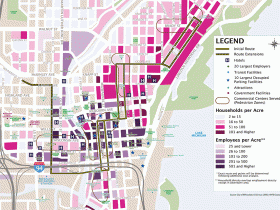
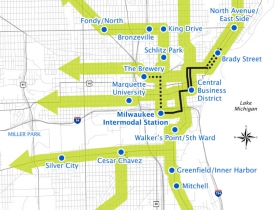
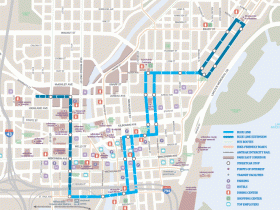
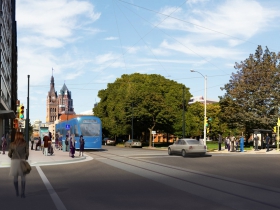
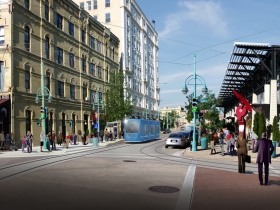
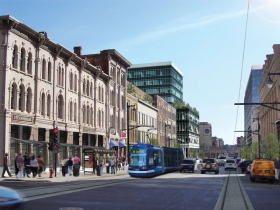


















The J-S ran a story on November 24 quoting Donovan as saying he planned to circulate these petitions. And now Chris Kliesmet says “If I had 60 days, it would be a slam dunk.” So why didn’t he start earlier, like when Donovan raised the issue in November?
Answer: This isn’t about a giving people a vote (they have had years to circulate petitions for one), it’s about delaying the streetcar in the courts after the Common Council finally approves it. (That’s why the November J-S article quoted Donovan as saying he planned to start circulating petitions AFTER the Common Council gave final approval.)
This is similar to what happened in Cincinnati. In 2008, the Cincinnati City Council approved a new streetcar line very similar to Milwaukee’s. After that approval, opponents forced a referendum which was held in 2009. They lost (the streetcar went forward).
Their reaction? File for another referendum (which was held in 2011). They lost again. Ground was finally broken in 2012 and Cincinnati’s streetcar is scheduled to open for passengers on September 15, 2016.
When did Chris Kliesmet move into the city of Milwaukee? And why does most of the opposition come from the suburbs?
January 10, 2015
Dr. Martin L. King said, “The ultimate measure of a man is not where he stands in moments of comfort and convenience, but where he stands at times of challenge and controversy”
I say young, old, millennial, men and women let’s go. You will be surprised at where you can go with hope, will, hit-the-street, handouts, social media, grace and RIGHT. The good news is you are working for you. Make it happen.
The Streetcar issue/spending is not a Transportation issue to benefit the Core Constituents of the city of Milwaukee that need, desperately need viable and real spending of the transportation funding to get them to employment opportunities and care facilities first and foremost. Good sense and charity begins at home then moves to tourists.
As far as defeating Mayor Tom Barrett, he is doing a great job of that himself. He has failed to represent the Core Constituents and they are just tired of that.
As far as Alderman Bob Bauman, he is hung up on the fact, “if we do not spend the funds, it will be given to other communities”. It should be given to others if they are going to benefit the constituents – that is not happening here. Alderman Bauman constituents, African American, other People of Color and the Work Challenged (west of downtown) are the ones he should be fighting for. You are just wrong here Alderman Bauman and we must persevere without you if you do not see the wrong in your judgment.
This is true for all the alderpersons who are hell-bent on spending the people’s money while they flounder economically. We must keep this alive and remember this in the “change of guard in 2016” – since Alderman Bauman reminded us it was not done in 2012.
This issue of working with Chris Kliesmet and Craig Peterson is seen by me as consolidating the base of Like-minds on an issue; and, working with individuals that share-our-views. This is done all the time as a strategy to win when seeking a large goal that benefits the People – All. it is reaching across the aisle.
As for the media, get started with grapevine, recruit, recruit outreachers and follow with social media – mpapublicpolicyreview.blogspot.com, Facebook, Next Door, Twitter and Tweets – the Winning hand.
Lastly, since time is of the essence, DO NOT spin your wheels in doom saying. Get busy. Give me an email jingle (mpapublicpolicyreview@gmail.com) so I can invite-bring others along.
Empowerment for Transportation for the People.
I wonder why its’ o.k. for the ‘Coalition for ‘Justice’ to block Freeways, harass Bucks fans… who knows what they’re planning for Summerfest, or if their ‘righteous disturbance will extend into the 3rd and 5th ward. And is the Trolley immune to their protests? Just properly enlightened folks will be riding the Trolley?
Suggestion: why doesn’t UM research how Milwaukee Country transit routes and schedules are researched and formulated… and clearly delineate which neighborhood(s) is being under served by existing transit. And then explain how the Trolley is going to help in the near future (not the nebulous “Trolley will spur development in 10 years ‘ crap), and why rethinking bus routes isn’t the answer to that problem….
The streetcar is just a step to develop a comprehensive transportation system in the city. For years the suburbs have fought regional transportation issues. Talk show hosts have to have some issue to rag about. This for them is their topic of the season. I can’t think of another reason that a petition drive was started so late, unless it would be political grandstanding.
Oh look, there’s Mary Glass. Perrenial grassroots organizer of UWM. It seems she is opposed to the streetcar? I couldn’t find a stated reason to support her position, merely ambiguous platitudes.
The anti streetcar crowd will have quite the battle. Mayhaps they will be distracted by the minimum wage argument and will squander their furious vigor on arguing that forgone conclusion.
Mary………. what???
Ms. Glass….. did you look at the proposed route beyond the starter system? The streetcar will serve African American neighborhoods to the west, northwest and north. It will also connect MLK, arguably the center of commerce for the African American community, to downtown as well as surrounding neighborhoods. Please be specific. Your post is just a bunch generic ramblings. You make no sense!
I don’t understand Joe Davis or Mary Glass. Do you understand that this is the first step in getting the city connected to the burbs? The region is not going to do it… the system has to have a starting point.
“Do you understand that this is the first step in getting the city connected to the burbs?”
Maybe this is exactly why there is so much opposition from the suburbs. As a whole, they don’t particularly want this connection as they fear it will come with Milwaukee’s problems and Milwaukee’s requests for money.
I’m sure you’re right Kyle, but what problems do the fine folks in the burbs think the streetcar will bring? People will hop on it, rob a bank or store in Waukesha or Mequon or Oak Creek, hop back on again and head home with their loot?
The petition circulators miss some important legislative steps. Once submitted, the City Clerk must review each and every signature and certify that the petitioners have the minimum number of valid sigantures and meet all the other statutory requirements for petitions of this sort. This can take several days or more, especially if a legal opinion is needed from the City Attorney. Then, at the next Council meeting, an ordinance would be introduced to establish this referendum requirement. The City Charter forbids an ordinance being adopted at the same meeting that it is introduced. Instead, the ordinance would be referred to committee and could not return to the full Council until the next Council meeting in February, at the earliest, thus running up against the 70-day prior to the election statutory requirement.
@Kyle, my point is why would Mary Glass fight against the best interests of the people she supposedly is trying to help? Milwaukee is taking the lead on regional mobility because the suburbs will not. I wonder what else “shakedown Mary” and Chris Kliesmet agree on…. probably nothing. By the way Mary…. I’m also a constituent, but you don’t have my best interests in mind do you?
I’m sure some people believe that would happen, though I wouldn’t consider it a particularly rational fear. It’s not as though there’s anything in place to stop a car from making the same trip, and if you’re going to rob a bank you might as well steal a car to get there.
Most people in the suburbs moved there to avoid one or more of the issues that are usually associated with cities: crime, schools, taxes, space, traffic, jobs. I’m not saying we all live in constant fear of those issues creeping out to us, but it certainly motivates people when it comes to political issues. Keep in mind you’re dealing with the same mindset that cheered when the high speed rail project was cancelled. This project isn’t different to most people in the suburbs: It’s a costly infrastructure project they won’t use and don’t want to understand, and they fear they’ll be asked to pay for it, and if they’re being honest some of them like being disconnected.
(This obviously isn’t everyone in the suburbs. Yes, they support infrastructure projects that some other people don’t use. I’m just trying to put context to an opposition.)
I agree with your points Kyle (and for the record I live in the burbs). It’s just hard me to understand believing that a streetcar connecting downtown to the north side and say Waukesha is going to directly result in an increase in crime in Waukesha.
The owner of Southshore mall thinks that buses degrade the value of his mall (at least I think that’s the mall with the recurring bus issues), so I’d guess that it all comes from the same general view. I think the cost sharing will actually be the more substanial issue. Revenues are only projected to hit 30% of operating costs in the densest part of the city, so it seems reasonable to assume that the branches will be less efficient at paying for themselves.
David, I’ve previously laid out my theory on Joe Davis’ motivation, as it builds a suburban donor base for a mayoral run. At the same time he’s trying to build support among Milwaukee voters (thus the downtown vs. core constituents language). As for how this serves Mary Glass (or if this commentor is the same Mary Glass you’d find by Googling her name), I have no idea. I’d be inclined to follow the money and see how it would help MPA to oppose this.
Kyle (post 14), the 30% figure you cite (the portion of initial streetcar operations not subsidized) is in line with MCTS (31%) and better than Madison (26%), Sheboygan (23%), Waukesha Metro (19%), Racine (19%), and Kenosha (16%).
Even in Chicago (for buses and el trains combined), fares and other revenue (like ads) only cover 45% of CTA operating costs.
(All of the above figures, except Milwaukee streetcar, from the 2013 National Transit Database.)
As the streetcar system is extended, costs should go up less than linearly. There are substantial costs (like heating the maintenance facility/car wash, and paying a supervisor/dispatcher up to 19 hours/day) that won’t increase as the system expands.
Also, the above percentages only consider operating costs, and streetcars have lower ongoing capital costs than buses. Buses must be replaced (at $300,000 to $400,000 each) every 10–15 years, while the new streetcars should last 50—100 years.
While it’s a light rail system and not a streetcar, I am intrigued by the success of Utah’s light rail system. While it’s the reddest of red states, residents have continuously voted to raise taxes to support the infrastructure. Rail projects have repeatedly come in on time and under budget. Ridership is increasing annually. If Utah can do it, why can’t we do it?
https://www.enotrans.org/wp-content/uploads/wpsc/downloadables/Utah1.pdf
http://www.deseretnews.com/article/865598365/Commuter-rail-travel-increased-from-2012-to-2013-report-says.html?pg=all
I’ll bet “Mill City Focus” is happy that Columbus Ohio didn’t have any streetcars so rioters couldn’t go elsewhere after setting more than 90 fires following the Buckeyes winning the National title.